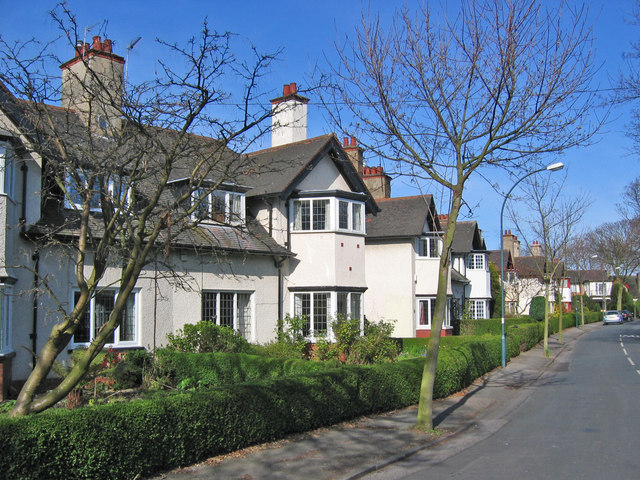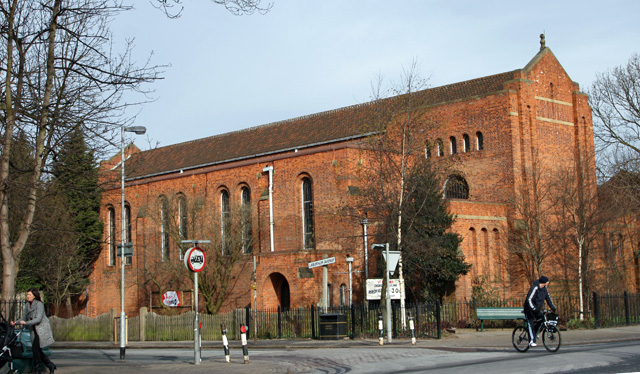The Garden Village, Kingston upon Hull on:
[Wikipedia]
[Google]
[Amazon]
 The Garden Village is an area of
The Garden Village is an area of
 The village was built on of land by the 'Hull Garden Village Co.', a company with £200,000 of capital of which two-thirds was contributed by
The village was built on of land by the 'Hull Garden Village Co.', a company with £200,000 of capital of which two-thirds was contributed by
Background Information
*The Garden Village Society
House Positions
*The Garden Village Society
Historical Development
Houses were built at a density of 12 per acre; , with streets named after trees and shrubs. Facilities included a shopping centre, club house, a hostel for female workers, Garden Village Society :
Public Buildings
as well as several almshouses, several of which are
 A temporary church dedicated to
A temporary church dedicated to
St. Columba’s Temporary Church
/ref> Laburnum Avenue, Holderness Road, site of a succession of churches a permanent building was constructed and opened in 1929, but was destroyed during the Second World War by bombing. A replacement was constructed using some elements of the old structure. The new church became the parish church for the ecclesiastical parish of
 The Garden Village is an area of
The Garden Village is an area of model village
A model village is a type of mostly self-contained community, built from the late 18th century onwards by landowners and business magnates to house their workers. Although the villages are located close to the workplace, they are generally phys ...
housing built in the early 1900s, in the Summergangs area of Kingston upon Hull
Kingston upon Hull, usually abbreviated to Hull, is a port city and unitary authority in the East Riding of Yorkshire, England.
It lies upon the River Hull at its confluence with the Humber Estuary, inland from the North Sea and south-east ...
, England, for the workers of Reckitt & Sons
Reckitt and Sons was a leading British manufacturer of household products, notably starch, black lead, laundry blue, and household polish, and based in Kingston upon Hull.
Isaac Reckitt began business in Hull in 1840, and his business becam ...
.
History and description
 The village was built on of land by the 'Hull Garden Village Co.', a company with £200,000 of capital of which two-thirds was contributed by
The village was built on of land by the 'Hull Garden Village Co.', a company with £200,000 of capital of which two-thirds was contributed by Sir James Reckitt
Sir James Reckitt, 1st Baronet (15 November 1833 – 18 March 1924) was a founder of the household products company Reckitt and Sons, developed from his father Isaac Reckitt's starch and laundry blue business.
Biography
James Reckitt was born ...
, and with two-thirds of the housing reserved for his workers. The company's dividends were limited to 3%.
The estate opened in 1908, its design was influenced by the ideas of the Garden city movement
The garden city movement was a 20th century urban planning movement promoting satellite communities surrounding the central city and separated with greenbelts. These Garden Cities would contain proportionate areas of residences, industry, and ...
. The design was by architects Percy Runton and William Barry. By 1913, 600 houses had been built in five sizes and with twelve different styles, generally with a short front garden and long back garden, often accessed by a 'ten-foot' alley, a low housing density, built of brick often pebble dashed, (some houses received a white ''Medusa Portland cement'' render) with steeply pitched roofs with overhanging eaves, recessed doorways and wood framed windows, privet hedges, and avenued tree planting generalising the design. A second phase of development began in 1923.Sources:
* Garden Village Society :Background Information
*The Garden Village Society
House Positions
*The Garden Village Society
Historical Development
Houses were built at a density of 12 per acre; , with streets named after trees and shrubs. Facilities included a shopping centre, club house, a hostel for female workers, Garden Village Society :
Public Buildings
as well as several almshouses, several of which are
listed buildings
In the United Kingdom, a listed building or listed structure is one that has been placed on one of the four statutory lists maintained by Historic England in England, Historic Environment Scotland in Scotland, in Wales, and the Northern Irel ...
. A substantial number of the ordinary housing stock are now also listed buildings.
During the Hull Blitz
The Hull Blitz was the bombing campaign that targeted the English port city of Kingston upon Hull by the German ''Luftwaffe'' during the Second World War.
Large-scale attacks took place on several nights throughout March 1941, resulting in over ...
the area was badly damaged by bombing, possibly due to its proximity to Reckitt & Sons' Dansom Lane works.
In 1950 the Garden Village company was disbanded; some houses were sold to tenants, the entire estate was bought by the Bradford Property Trust, the open spaces known as 'The Oval' and 'The Playground' were transferred to the Hull City Council
(Kingston upon) Hull City Council is the governing body for the unitary authority and city of Kingston upon Hull. It was created in 1972 as the successor to the Corporation of (Kingston upon) Hull, which was also known as Hull Corporation and fou ...
for a nominal fee. The area became a designated conservation area in 1970.
Church of St Columba
 A temporary church dedicated to
A temporary church dedicated to St Columba
Columba or Colmcille; gd, Calum Cille; gv, Colum Keeilley; non, Kolban or at least partly reinterpreted as (7 December 521 – 9 June 597 AD) was an Irish abbot and missionary evangelist credited with spreading Christianity in what is toda ...
had been built in 1914, on Laburnum Avenue also by the architects Runton and Barry, Houlton :St. Columba’s Temporary Church
/ref> Laburnum Avenue, Holderness Road, site of a succession of churches a permanent building was constructed and opened in 1929, but was destroyed during the Second World War by bombing. A replacement was constructed using some elements of the old structure. The new church became the parish church for the ecclesiastical parish of
Drypool
Drypool (''archaic'' DripoleAlso Dritpole, Dritpol, Dripold, Dripol, Dridpol) is an area within the city of Kingston upon Hull, England.
Historically Drypool was a village, manor and later parish on the east bank of the River Hull near the co ...
in 1961.
See also
*List of areas in Kingston upon Hull
This is a list of areas in Kingston upon Hull, England.
{{TOC right
Within Hull unitary authority East Hull
* Bilton Grange Estate
* Bransholme
* Drypool
** Garrison Side
** The Groves, Kingston upon Hull, The Groves
* The Garden Village, Kings ...
References
Sources
* * *Maps
External links
{{Reckitt Benckiser, state=collapsed Model villages Garden suburbs Wards and districts of Kingston upon Hull Geographic histories of Kingston upon Hull Reckitt Housing estates in Kingston upon Hull